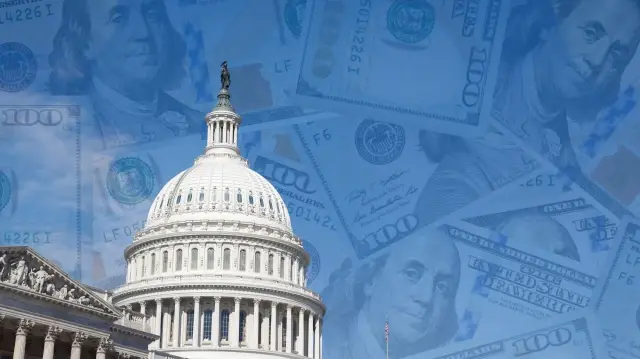Washington’s vicious cycle: federal budget wars

The U.S. federal government has shut down because Congress failed to reach a deal on a temporary budget. In July, with Trump’s support, Republicans passed the “Great, Beautiful Bill” in Congress, which foresaw critical changes to the healthcare system. The law called for the subsidies in Obama’s health reform to end at the close of this year. Because Democrats resisted and demanded the continuation of these subsidies in the budget, no agreement was reached and now an open-ended federal government shutdown process is underway.
Federal shutdowns also occurred in 2013 (16 days) and 2018 (35 days) as a result of clashes over healthcare and immigration policy. In response to the resistance strategy influenced by the Democrats’ progressive left wing, the Trump administration has threatened more layoffs in the federal government. If no compromise is reached, the federal government’s closure will drag on for weeks, negatively affecting thousands of federal employees.
Both Democrats and Republicans will try to pin the political cost of this situation on each other. Federal budget wars, which are unpopular with the public and benefit neither side, will only strengthen the perception that Washington cannot solve people’s problems. Because Democrats still have no meaningful strategy for how to fight Trump, the move to shut down the federal government risks appearing as an act of desperation.
POLITICAL CHESS
The threat of shutting down the federal government has become a frequently used tool in political clashes over spending priorities and limits. Political polarization, which has deepened steadily since the Obama era, has eroded the culture of compromise that American democracy has long prided itself on.
Obama’s attempt to push through his health reform during his first term, when Congress was also under Democratic control, was met with an unusually fierce Republican resistance. As a result, the deadlock in the 2013 budget negotiations led to a 16-day federal government shutdown.
Republicans tried to block the system by arguing that Obama’s health reform was contrary to the country’s capitalist system and represented an expansion of the welfare state and an intervention in the private sector. In order to win Republican support, Obama gave up some of the most critical provisions of his health reform, which, although initially hard to implement, became popular over time. So much so that even Trump, who had promised to repeal the reform law that provided health insurance premium subsidies to low- and middle-income groups, backed down in the face of the system’s popularity.
However, the gradual reduction of subsidies and the mega bill passed in July allowing these subsidies to expire at the end of the year pushed Democrats to wield the budget weapon this time. Unable to block Republicans from passing their desired laws while the GOP holds Congress, Democrats are now insisting on setting budget priorities and trying to play political chess.
THE COST OF THE SHUTDOWN
Both parties’ attempts to push their policy priorities through a budget war have eroded trust in the American political system. The public has interpreted the federal government’s shutdown not as a principled stand by either party but as a sign of Washington’s dysfunction and inability to solve people’s problems.
In 2018, Trump’s triggering of the longest federal shutdown in U.S. history because he wasn’t granted funds to build a wall on the Mexican border was perceived as an admission that his “Mexico will pay for the wall” promise was unrealistic. House Speaker Nancy Pelosi, who mocked Trump’s wall project with “I’ll give him a dollar,” seemed to relish the Democratic majority in the House.
Trump’s failure to deliver on his promise and the Democrats’ willingness to let the federal government shut down disappointed thousands of federal employees who were temporarily out of work. The federal government’s shutdown also led to the U.S. credit rating being downgraded for the first time, increasing borrowing costs. During such periods, although many essential functions of the federal government continue, the uncertainty faced by many federal employees fuels political instability.
Since taking office in January, Trump has virtually gutted the federal government from the inside and now has the opportunity to expand layoffs even further. Having spent months hollowing out the bureaucracy, the Trump administration says it will intensify these efforts and is placing the blame for the resulting political bill entirely on the Democrats. Looking at past examples, it’s clear that shutting down the federal government benefits neither side but severely undermines trust in politics. The shutdown of a federal government that has been forced to operate with temporary budgets for years due to the lack of bipartisan compromise shows how much Washington’s governing capacity has weakened. This situation, which once again demonstrates to the international public that the U.S. is deeply divided at home and unable to produce solutions, may also cause unease in global financial markets. It will be impossible for Trump, who won elections boasting of his economic management, to escape the negative economic picture that factors like extra tariffs, high interest rates, weakening employment indicators and high prices will create.
Democrats may also face the political cost of trying to keep Obama’s subsidies going after failing to prevent a $1 trillion cut from the healthcare system. As both sides try to play political chess, it would not be surprising if they suddenly found themselves in a game of Russian roulette and turned to compromise instead of political suicide.
Reklam yükleniyor...
Reklam yükleniyor...








Comments you share on our site are a valuable resource for other users. Please be respectful of different opinions and other users. Avoid using rude, aggressive, derogatory, or discriminatory language.